Area 2 Nurse Tree Planting
The trees planted over Area 1 in August 2023 survived their first summer, incursions by goats and deer. By March 2024, the death rate was just 1% – far fewer than Glen Riley from Habitat Restorations Aotearoa advised me to expect. Half of the deaths were Toitoi. It seems that a batch was not quite up to the conditions. Both Glen Riley and Phil Dunn from Ribbonwood Nurseries credited the low death rate to planting trees that were more mature than most customers choose (my trees were in 1 litre pots). My 99% survival rate shows the false economy of spending less, and watching 15% – 20% of the trees die.
I arrived in Taieri Beach a few weeks before Area 2 was sprayed by Habitat Restorations. For most of the time, I cut gorse growing at the interface between the pasture and the existing forest. It seemed like a never-ending task, but I finished clearing Area 2 just prior to the planting team starting work. It was satisfying to welcome the Habitat Restorations team back on site – some new faces, and some who worked on Area 1.
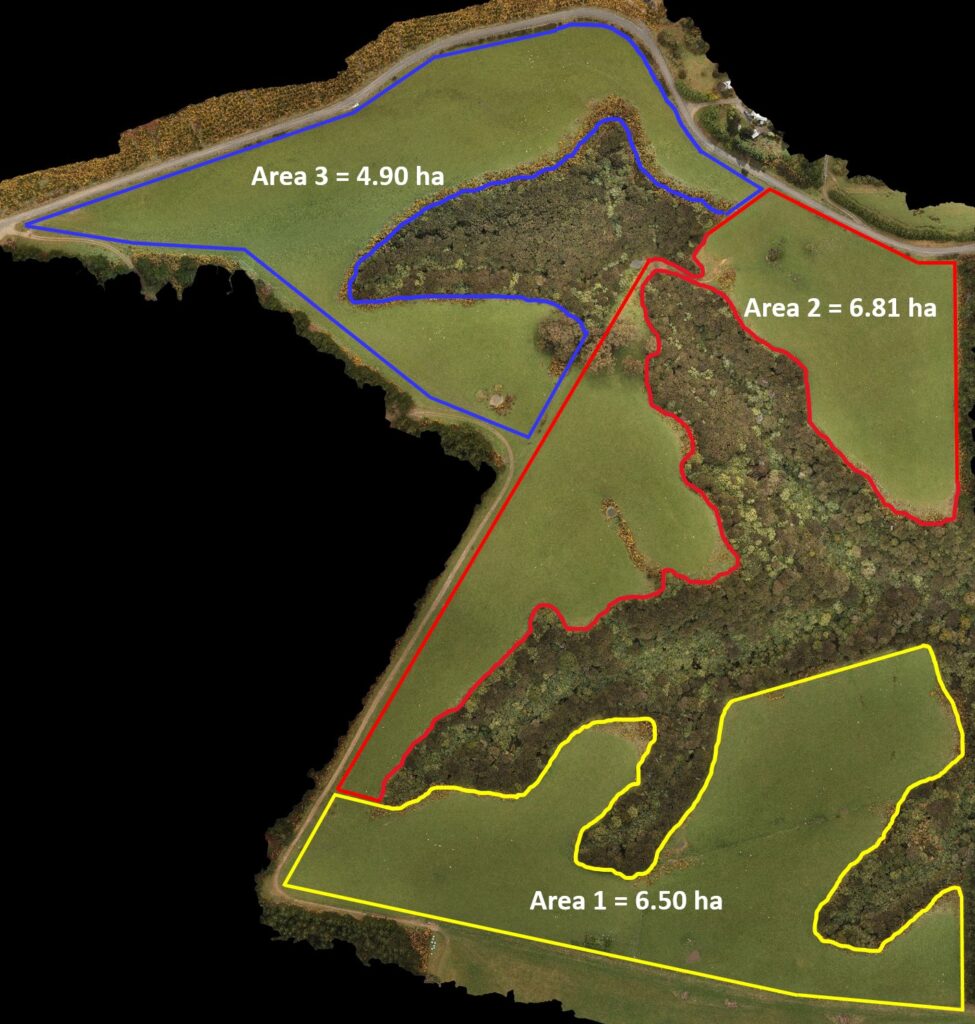
Earlier in the planting program, the weather was mild, with no rain. Again, I concentrated my efforts on preparation: placing the tree guard components (fibre guard, woollen mat, bamboo stakes) at the planting holes, and returning to fold up the guard for the planters.
The weather for the roadside paddock of Area 2 was colder and wetter, but the planting was finished in 10 working days.
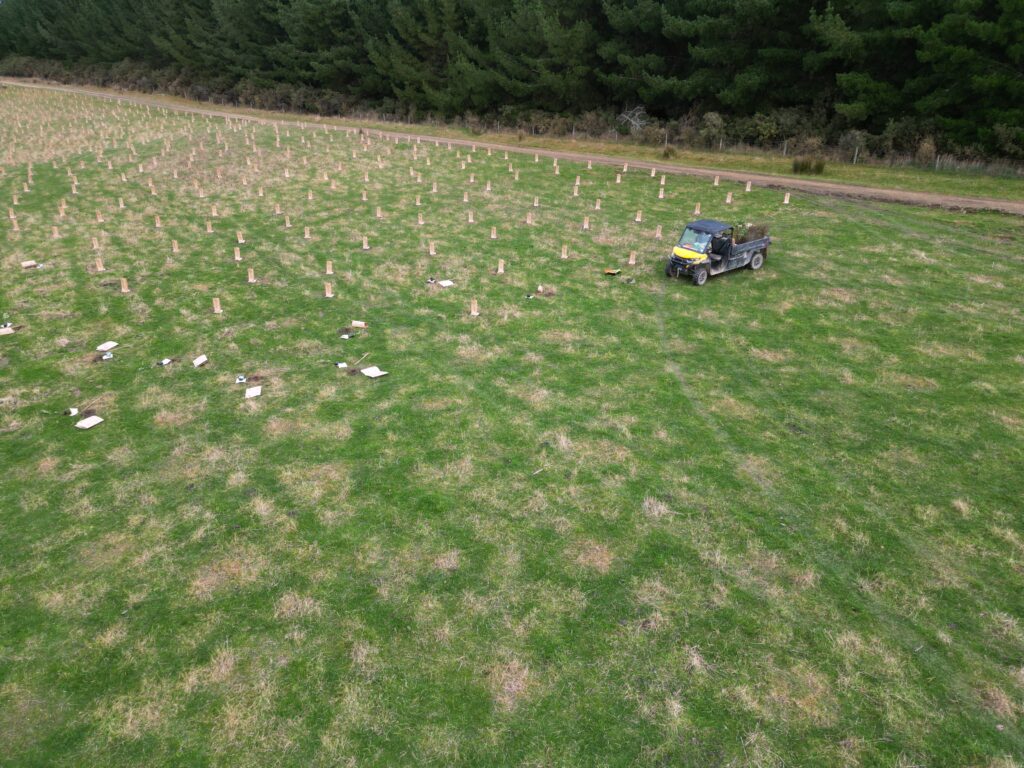
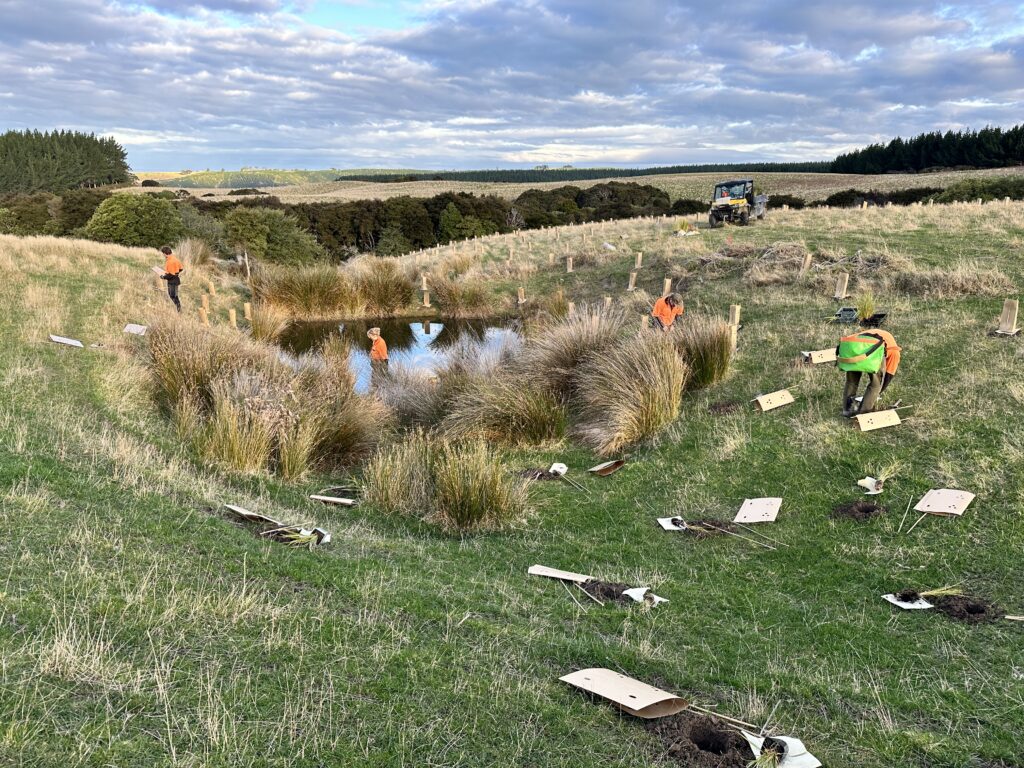

6,228 trees were planted, covering 6.8 ha. It was very satisfying to complete the next stage of planting. I now have over 13,500 nurse trees in the ground, with more than two thirds of the pasture planted out.
The plant mix from Ribbonwood Nurseries was slightly different than the mix for Area 1. Manuka displaced some of the Kanuka. Marbleleaf, Mingimingi and Southern Rata were also added, together with other varieties. More than 30 different varieties increases the diversity of the flora. This will increase the forest resilience and add to the variety for the fauna.
Over both Areas 1 and 2, Kanuka constitute 14% of the total plants, with an overall average of 411 plants (3% of the total) for each of the 33 varieties.
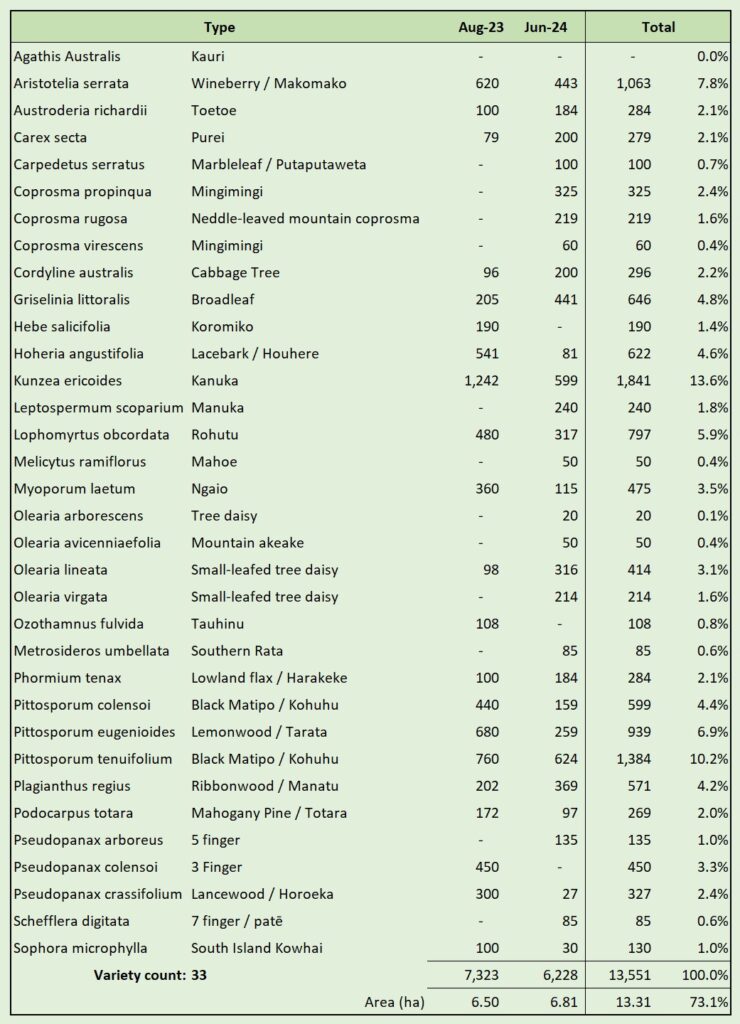
Phil Dunn from Ribbonwood Nurseries visited us as the planting was approaching completion. We walked over Area 3 (the hill paddock) with Glen Riley and discussed the requirements flora requirements.
It’s been a cold May and plant growth slowed. Phil advised that there wouldn’t be enough plants to complete Area 3 in August, so we’ll come back to complete it in October. It’s a few months behind schedule, but it’s better to wait until the trees are ready, than to keep to a schedule and risk higher death rates.
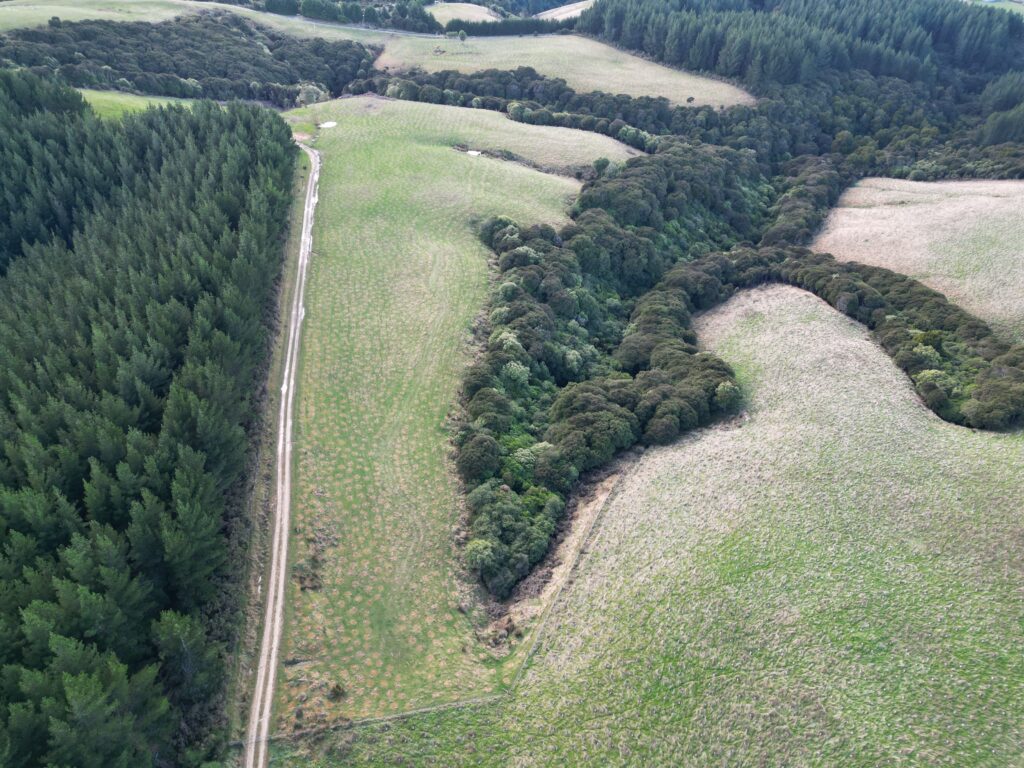
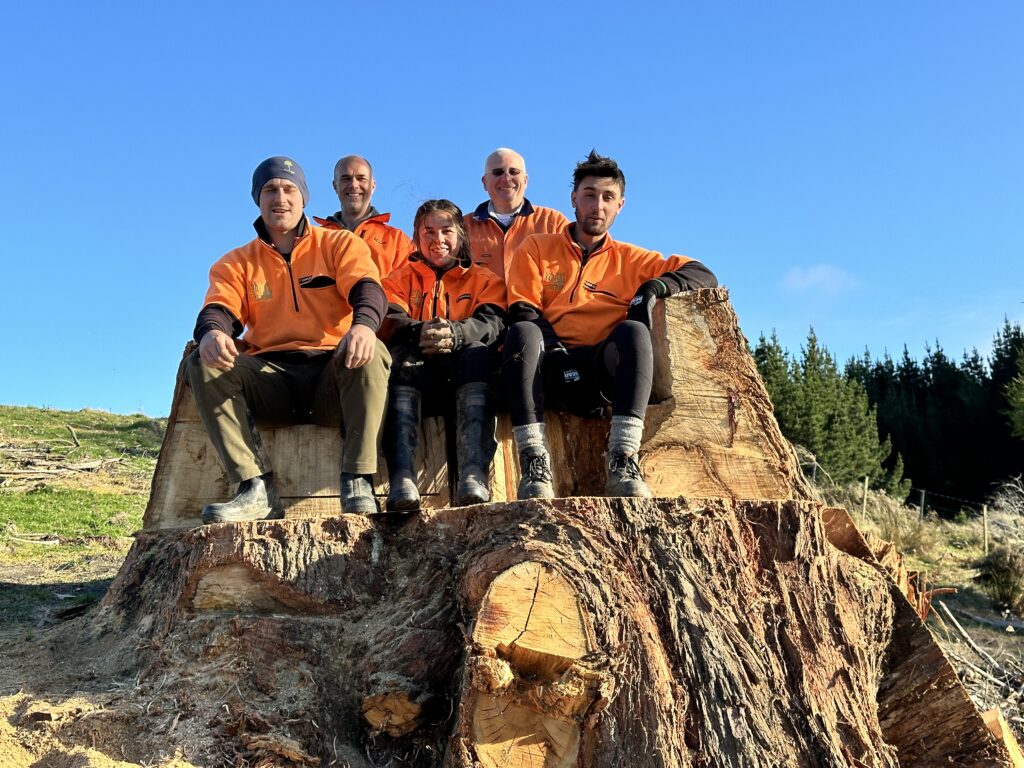
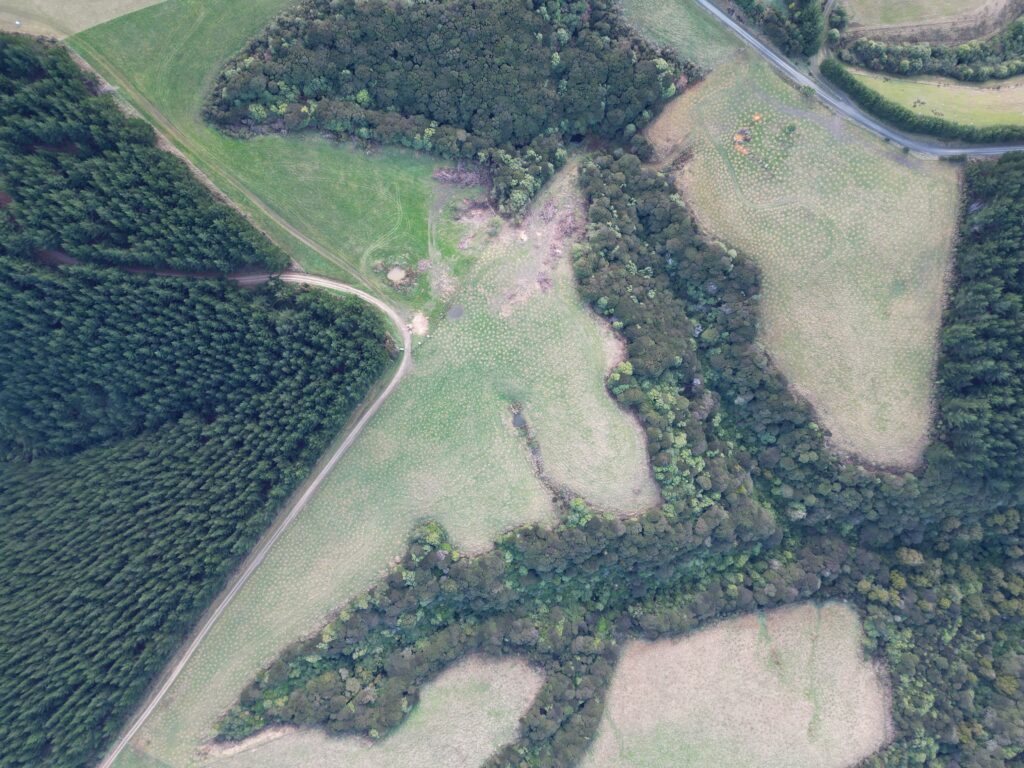
14 July 2024
